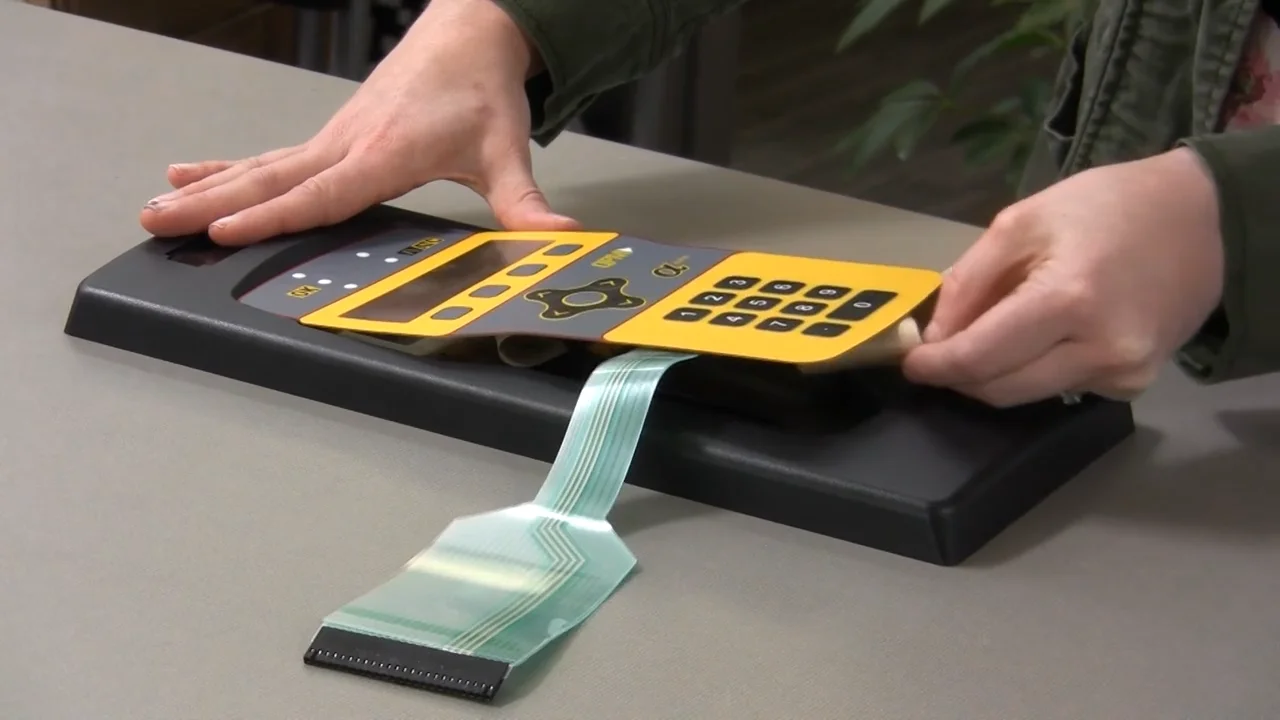Check Out Different Kinds Of Membrane Switch Technologies for Your Requirements
Recognizing the Capability of Membrane Switches Over for Customer Interface Instruments
The functionality of membrane layer switches over stands for a considerable development in user interface design, combining effectiveness with aesthetic flexibility. As markets significantly prioritize user experience, comprehending the subtleties of membrane switch technology ends up being important.
What Are Membrane Layer Switches?
Membrane switches are ingenious interface gadgets that help with user communication with electronic tools. These flexible components are composed of multiple layers, including a visuals overlay, spacer, and a published circuit layer. The design permits for a seamless combination into numerous electronic tools, boosting both the visual and useful aspects of interface.
Membrane layer switches are frequently utilized in a vast array of applications, from family home appliances to commercial machinery and medical devices. Their building typically features a thin profile, making them a suitable choice for compact designs. The responsive feedback provided by these buttons can be engineered to fulfill certain individual preferences, making sure reliable communication in between the user and the tool.
Sturdiness is another substantial benefit of membrane buttons, as they are resistant to dust, moisture, and chemicals, which boosts their life-span in requiring environments. Additionally, these switches can be customized in terms of shape, dimension, and visuals layout, enabling branding and user-specific attributes. Overall, membrane layer changes represent a useful remedy for boosting individual experience in digital gadgets, combining capability with aesthetic charm in a reliable manner.
Just How Membrane Layer Switches Over Work
Operating on an uncomplicated principle, membrane switches make use of a split construction to register individual input successfully. Each button includes several layers, consisting of a printed circuit layer, a spacer layer, and a leading visuals layer, which are designed to collaborate flawlessly. When a user presses the top layer, it compresses the spacer layer, bringing the conductive aspects of the circuit layer into call with each other.
This contact develops a closed circuit, signifying the tool to perform a details feature. The style enables different arrangements, including responsive comments, which can improve the customer experience by offering a physical feeling upon activation. The materials used in membrane layer buttons usually consist of flexible substrates, such as polyester or polycarbonate, which make certain sturdiness and strength versus wear and tear.

Trick Benefits of Membrane Buttons

Another significant advantage is their compactness. Membrane switches are thin and light-weight, which makes it possible for makers to save space in their tools without giving up capability. This feature is specifically useful in applications where weight and volume are vital considerations.
Furthermore, membrane switches are immune to dirt, dampness, and chemicals, improving their durability. This strength expands their lifespan and lowers the demand for constant replacements, resulting in expense financial savings in time.
Furthermore, the responsive responses provided by membrane layer buttons can be optimized to boost customer communication. They can include features such as raised switches or audible clicks, improving usability and user experience.
Applications Across Industries
User user interface tools utilizing membrane buttons prevail in a broad variety of sectors, showcasing their flexibility and capability. Membrane Full Article Switch. In the clinical market, membrane layer buttons are indispensable to devices such as diagnostic devices and patient tracking systems, where their durability and simplicity of cleansing are crucial for keeping health standards. In the automotive market, these buttons are utilized in dashboard controls and infomercial systems, offering a sleek and modern interface for users.
In addition, the customer electronic devices sector benefits from membrane buttons in appliances and handheld tools, where compact style and user-friendly interfaces enhance individual experience. Industrial applications likewise take advantage of membrane switches for control board in equipment and automation systems, emphasizing their robustness and resistance to harsh atmospheres.
In the aerospace and defense industries, membrane buttons are made use of in cabin controls and equipment, where integrity and performance under extreme conditions are extremely important. In addition, the pc gaming market increasingly integrates membrane switches in controllers and arcade machines, adding to an appealing here are the findings user experience. On the whole, the adaptability of membrane switches allows their widespread usage across countless industries, emphasizing their importance in modern user interface style.
Future Trends in Membrane Switch Over Technology

In addition, making use of innovative materials, such as polycarbonate and polyester movies, is expected to increase, supplying improved sturdiness and resistance to environmental stressors. These materials contribute to the total durability of membrane layer buttons, making them ideal for harsher commercial applications.
Additionally, the consolidation of clever modern technology, including IoT connection, will enable membrane buttons to interact with other gadgets and systems, helping with a more interactive individual experience. This trend aligns with the growing need for smart tools throughout numerous fields, from healthcare to customer electronic devices.
Last but not least, customization options are expected to increase, permitting producers to develop bespoke remedies tailored to details individual demands and preferences. These advancements will place membrane layer buttons as important components in the development of user interface technology.
Verdict
In final thought, membrane layer changes stand for a crucial innovation in user interface innovation, using a trustworthy and flexible solution for diverse electronic applications. As advancements in product scientific research and touch picking up modern technologies continue, the performance and applicability of membrane switches are anticipated to increase, enhancing their significance in modern electronic gadgets.